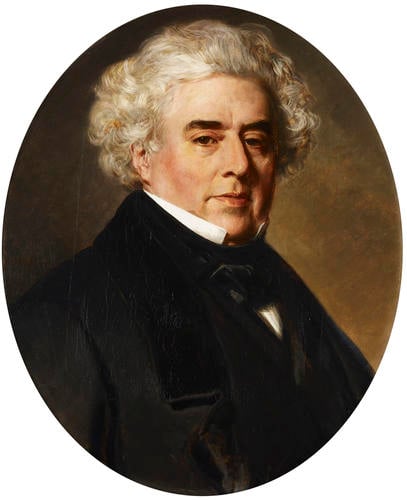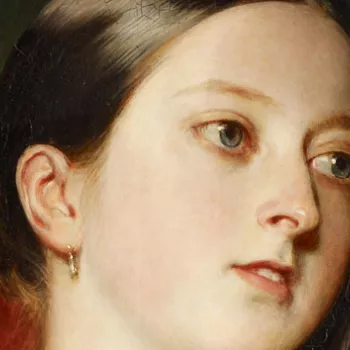Luigi Lablache (1794-1858) Signed and dated 1852
Oil on canvas | 62.2 x 50.5 cm (support, canvas/panel/stretcher external) | RCIN 404692
-
Luigi Lablache (1794-1858) trained as a singer, violinist and cellist in his home town of Naples at the Conservatorio della Pietà dei Turchini, and it was in Naples that he began his professional operatic career. His reputation as a celebrated bass-baritone, equally at home in both comic and serious roles, quickly spread through Europe and he performed in the major opera houses in Vienna, Paris, London and Milan. As a child he sang in a Requiem commemorating Haydn's death and in 1827 was one of the torchbearers, along with Franz Schubert, surrounding the coffin at the funeral of Beethoven in Vienna. The singer's first performance in London was on 30 March 1830 at the King's Theatre, in the part of Geronimo in Il Matrimonio Segreto by Domenico Cimarosa. Thereafter Lablache performed annually during the summer season in London, to much critical and public success. He was well known for being able to break a glass by singing into it.
Beginning in April 1836 Luigi Lablache gave regular singing lessons to Queen Victoria. She is said to have had a clear soprano voice and her Journal frequently records the musical program for the lesson, together with reports of their discussions on the merits of composers and musicians. One typical entry reads: 'I sang Marliani's lovely little aria from "Ildegonda" twice over & several other solos & duets. I am afraid I am too modern to appreciate Mozart much but Lablache who understands music thoroughly said "C'est le Papa de tous"' (18 April, 1837). These music lessons, in which Prince Albert, a baritone, sometimes took part as well as the Queen continued every summer for twenty years, until Lablache began to suffer from ill health in 1857. Queen Victoria delighted in seeing Lablache perform in roles such as Massimiliano in I Masnadieri (The Bandits) by Giuseppe Verdi, of which the royal couple attended the world première on 22 July 1847 (the Queen thought that Lablache looked 'fine, but too fat for the starved old man') and Caliban in Halévy's La tempesta in 1850: 'the great feature of the whole was Lablache as "Caliban" in which part he has not to be recognised. It must be a most fatiguing part for him, particularly in this great heat' (Journal, 20 June, 1850).
Queen Victoria was very impressed with this portrait when she saw it: 'It is a speaking likeness, life-size head, and really quite a chef d'oeuvre. What a gift, to have such a power of catching individual likenesses!' (Journal, 29 May, 1852). A few days later, she had the opportunity of telling Lablache, 'which seemed to please him very much' (Journal, 4 June, 1852).
Text adapted from Victoria and Albert: Art & Love, London, 2010Provenance
Commissioned by Queen Victoria in 1852 (payment of £60 dated 1 July 1852, RA VIC/ ADD T/ 232/18); recorded in the Prince Consort's Corridor at Buckingham Palace in 1876
-
Creator(s)
-
Medium and techniques
Oil on canvas
Measurements
62.2 x 50.5 cm (support, canvas/panel/stretcher external)
85.1 x 74.0 x 6.4 cm (frame, external)
Category
Object type(s)
Other number(s)
Alternative title(s)
Louis Lablache (1794-1858)









